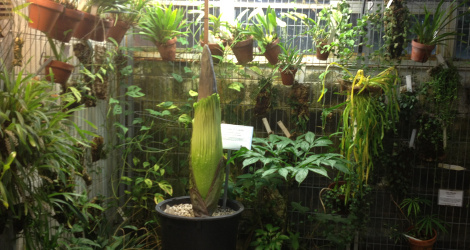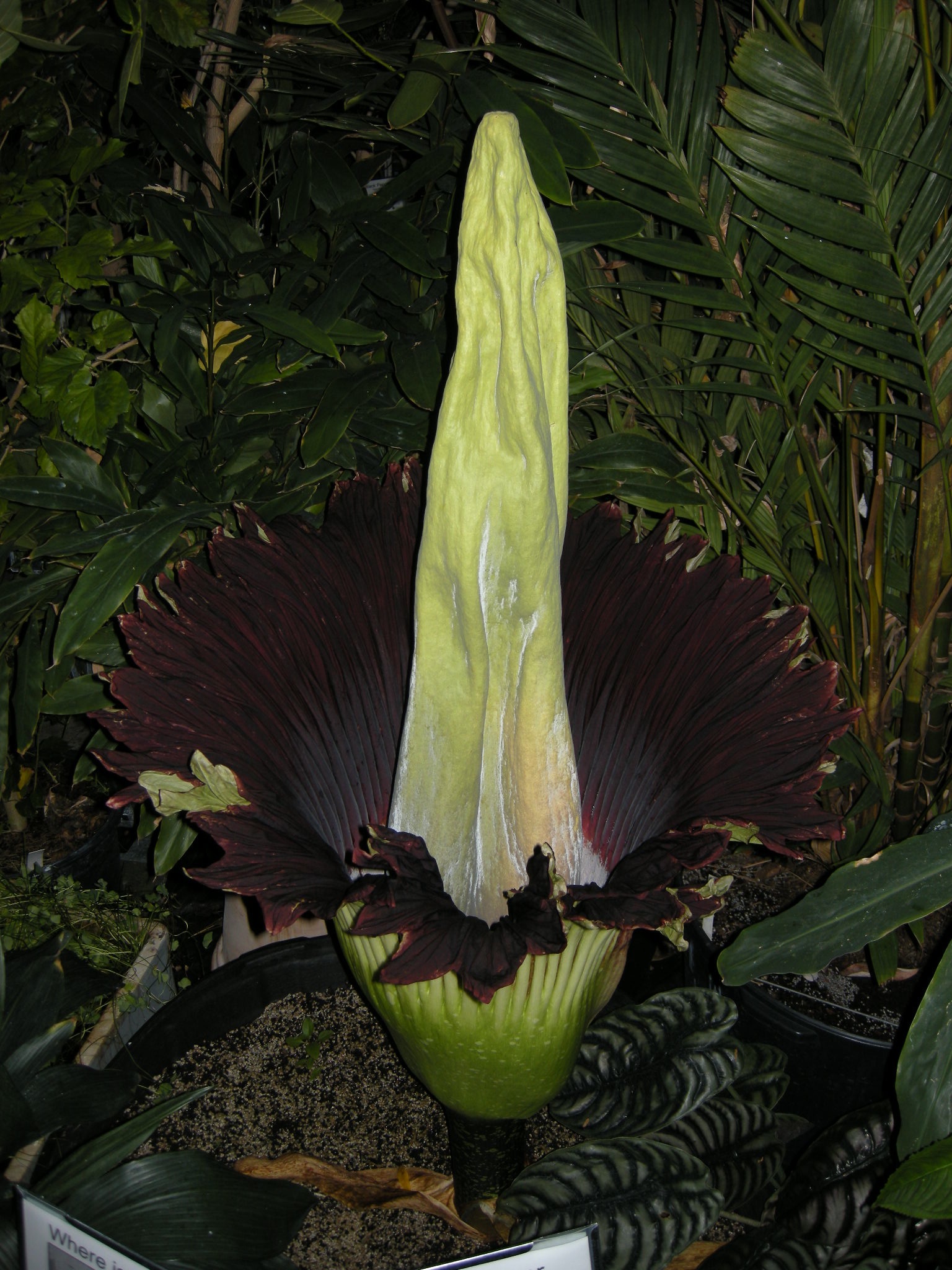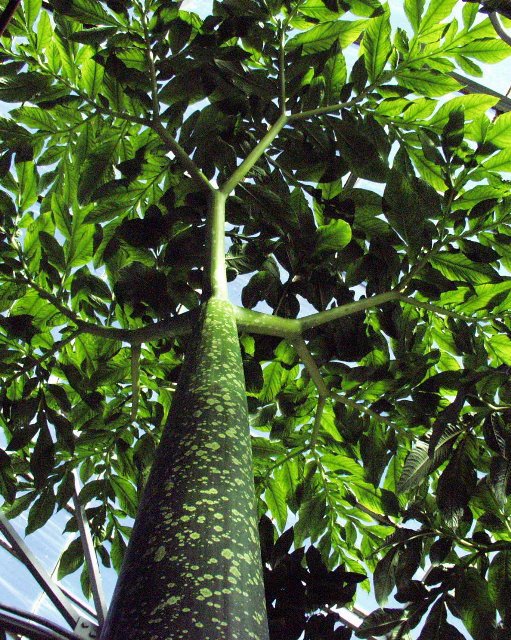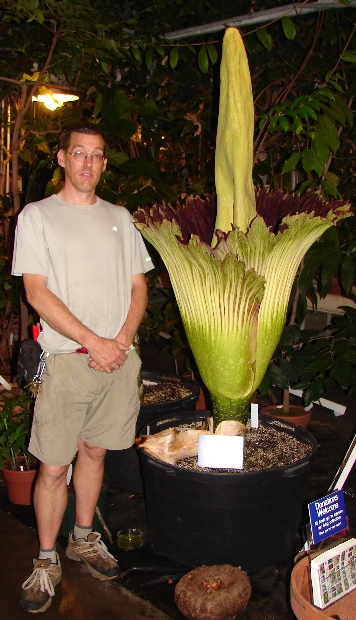Accession Data
Amorphophallus titanum
Common Name: Titan Arum
Family: Araceae
Country of Origin: Sumatra, Indonesia
Description: Amorphophallus titanum, the titan arum, is a tuberous plant endemic to western Sumatra, where it grows in openings in rainforest on limestone hills. Locals know it by the more evocative name 'corpse flower' (bunga bangkai), because of the hideous stench the fly-pollinated inflorescences produce.
Mature tubers of A. titanum typically weigh between 25 and 50 kg, with weights up to 75 kg recorded. Tubers produce solitary, highly dissected leaves over 3 m high and 4 m across. Leaves persist for ca. 1-2 years. The plant enters a dormant phase of several months after a leaf senesces, before sending up a replacement leaf and growing a new root system. Leaves are hysteranthous: flowers are borne by otherwise dormant plants. The timing of dormancy and growth phases seems to be more or less random with respect to the seasons; wild populations are reported to have plants in various stages of growth at any given time. It is unclear why the plants ever go dormant at all, given their equatorial habitat.
Flower buds emerge shortly after tubers become dormant, and are accompanied by the development of a limited root system, unlike the flowers of temperate Amorphophallus species. Inflorescences consist of a fluted spathe (petal-like leaf) with a meat-like purple interior, and a sickly-yellow spadix (central stem bearing many small male and female flowers). While technically not single flowers, the inflorescences of A. titanum are the largest flower-like structures in the plant kingdom, often reaching 2 m high and 1 m in diameter, or larger. While open, the spadix warms itself with metabolic heat, in what is perhaps an adaptation to volatilize and disperse its carrion-insect-attracting odor. The putrid smell of the corpse flower is strongest just after the spathe unfurls, late at night, suggesting pollination by nocturnal flies and beetles.
The following YouTube video features our 2011 bloom and was produced for us by UConn Today:
Accession Data
USDA Zone: 11
Accession #: 201300015
Accession Date: 2013-04-17 00:00:00
Bloom Status: 🪴 Not Flowering
Location: 1211
Quantity: 1
Source: Ed Cobb, Cornell U.
Provenance:
2012 seed from 'Wee Stinky' (Cornell) Cornell plant acquired from University of Wisconsin and pollinated by 'Metis' 'Metis' grown at SUNY Binghamton, wild collected seed 2005, pollen frozen (-80) from initial 2010 bloom of Metis
Culture: When repotting: 2-3 inches of BK25 at the bottom of the pot. Bonemeal sprinkled on top and mixed into the media. Add more media until you almost reach the height of where you will place the corm. Very thin layer of bonemeal on top; should still be able to see media underneath...Do not mix. Thin layer of media on top of bone meal layer; just enough to keep corm from directly contacting the bone meal. Place corm and finish filling in with regular media.
Classification
Division: Magnoliophyta
Class: Liliopsida
Subclass: monocots
Order: Alismatales
Family: Araceae
SubFamily: Aroideae
Tribe: Thomsonieae
References
- Lobin, W., Neumann, M., Radscheit, M. & W. Barthlott (2007): The cultivation of Titan Arum (Amorphophallus titanum) – A flagship species for Botanic Gardens. Sibbaldia 5: 69-86. Last accessed on Thursday, September 08, 2016.
Images




